SSZTAQ9 october 2016 ADC12J4000 , ADC16DX370 , ADC32RF45 , ADS54J60
Filtering plays an essential part in nearly all communication systems, since removing noise and distortion increases channel capacity. Designing a filter to pass only the desired frequencies is fairly easy. However, in real physical filter implementations there is a loss of desired signal power through the filter. This signal loss contributes decibel for decibel to the analog-to-digital converter (ADC) noise figure.
What may be even worse is that the amplifier driving the ADC will generate distortion at multiples of the filter loss. For example, if a filter has 7dB of loss, the amplifier needs to drive the signal 7dB stronger. This will result in second-order products with 7dB higher levels; third-order products will be 14dB worse. Some of these distortion products (intermodulation in particular) cannot be filtered out, so keeping filter loss to a minimum can be critical to system performance.
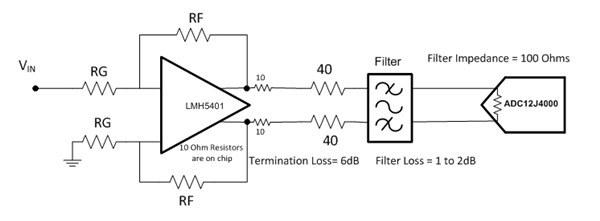 Figure 1 Typical Signal Chain
Figure 1 Typical Signal ChainSelecting system components is also a key part of system design. Figure 2 shows some ADCs, as well as their input specifications and an estimate for the amount of acceptable loss between the ADC and a typical 2Vpp amplifier output signal. The “Allowable filter loss” shown in the table is an arbitrary specification, but it will help select an ideal filter topology.
 Figure 2 ADC Input Parameters
Figure 2 ADC Input ParametersSources of Filter Loss
Reference measurements are another key consideration. While RF systems are usually designed around power levels, nearly 100% of available ADCs sample voltage and not power. For this reason, losses between the ADC driver amplifier and the ADC are usually specified in decibel volts instead of decibel power. This can be confusing, but it is important – because it is the loss in voltage that shows up in ADC measurements. Note that a 3dB loss in power equates to a 6dB loss in voltage.
Impedance Transformation
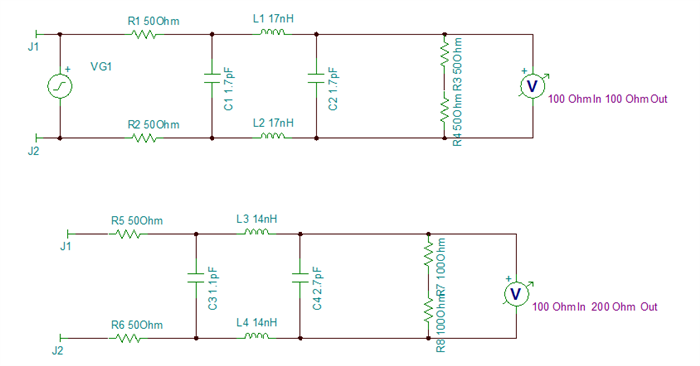 Figure 3 Filters with Different Impedance Ratios
Figure 3 Filters with Different Impedance Ratios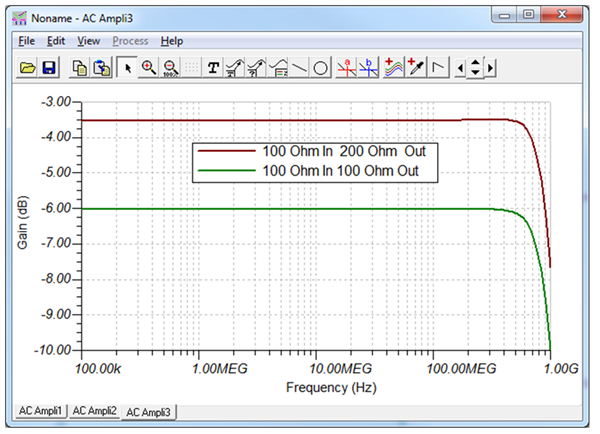 Figure 4 Filter Responses for Different Impedance Ratios
Figure 4 Filter Responses for Different Impedance RatiosDecreasing the Filter’s Driving Impedance
With low-pass filters, you can adjust the filter corner frequency to recover the lost bandwidth, but with band-pass filters this is more difficult. Both pass-band flatness and adjacent-channel rejection will suffer with improper driving impedance.
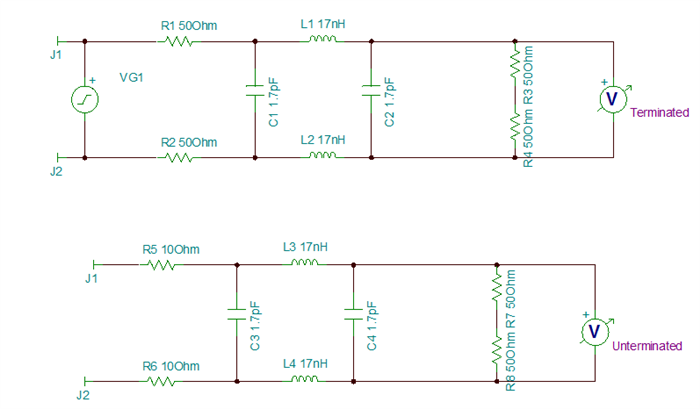 Figure 5 Filters with Different Driving Impedances
Figure 5 Filters with Different Driving Impedances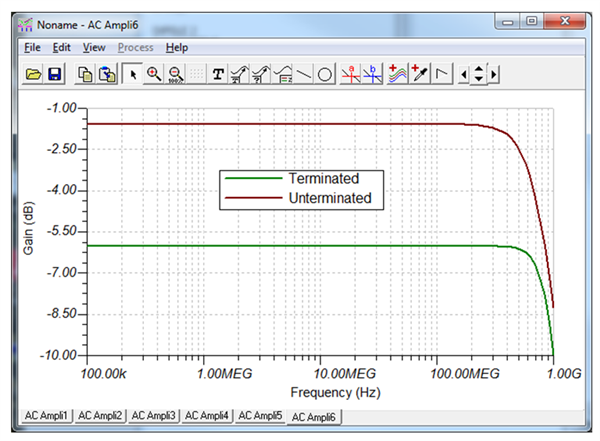 Figure 6 Results with Different Driving Impedances
Figure 6 Results with Different Driving ImpedancesConclusion
Additional Resources
- Download the application report, “ADC32RF45: Amplifier to ADC Interface.”
- Learn about TI’s data converter portfolio and find technical resources.
- Explore the amplifier IC portfolio to find the best amplifier to help buffer your filter.